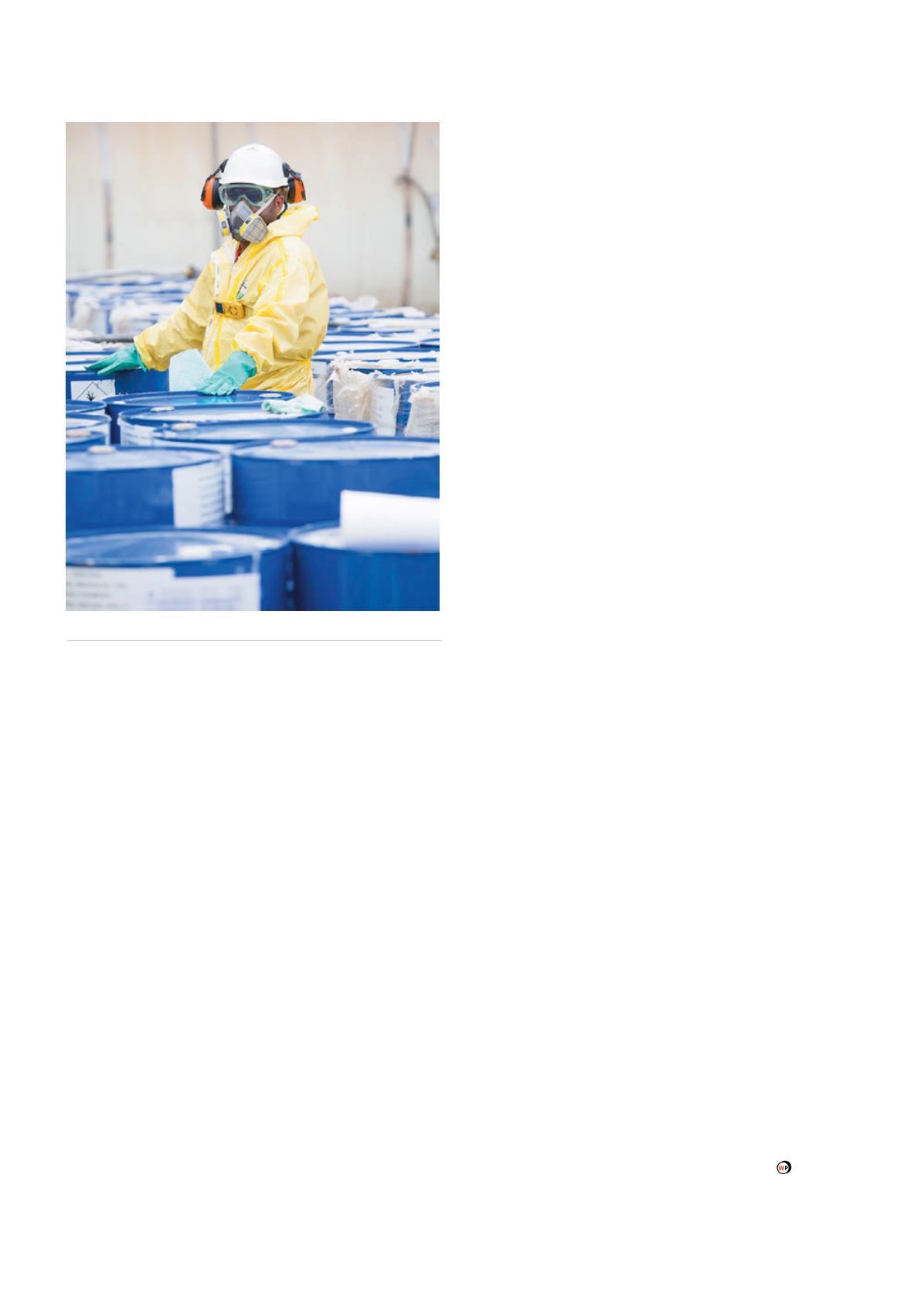
Integration, integration, integration
Data in silos are rarely useful. One of Shell’s principal reasons
for choosing the SampleManger LIMS was how easily it could
be integrated with other enterprise systems, especially its
operations management system – known throughout Pearl
GTL as OTTER – process historian (PI) and its oil movement
and batch tracking system.
The integration with process historian is particularly
important for Pearl GTL. While less sophisticated labs
manually forward test results to operations personnel,
technologists, process engineers and others, stakeholders
at Pearl GTL receive these results automatically through
process historian as soon as they are authorized in
SampleManager LIMS. Tight integration ensures that multiple
needs are met simultaneously, all in a highly automated
environment that is based on business rules unique to Pearl
GTL’s operation.
Pearl GTL’s oil movement and batch tracking system also
benefits from tight integration. As panel operators prepare
to move oil to new tanks for shipping, for example, they
needn’t wait for manual notification of test results. Within
their familiar interface they can see results as soon as the lab
uploads the data into the LIMS. This routinely reduces loading
delays, which can eliminate costly demurrage charges that can
reach as much as US$35 000 per day. Since Pearl GTL opened,
the facility has incurred no demurrage charges, a remarkable
feat for such a massive operation.
Built-in quality
The complex and highly dispersed wellhead, pipeline and
facilities infrastructure generates massive amounts of data,
and managing this with a paper-based system would be
impossible. A modern LIMS is designed from the ground up
to be paperless, eliminating manual transcription, a common
source of human error, and the bane of more traditional
labs where personnel make an average of 3 - 6 mistakes for
every 1000 lab readings transcribed. With a sampling program
the size of Pearl GTL’s, this could lead to dozens – if not
hundreds – of errors every day. Because analytical instruments
used within Pearl GTL talk directly to SampleManager
LIMS, however, good data goes in and great insights come
out. Automation removes human error and accelerates
management decision-making.
Compliance, quality and safety: from the field
to the pipeline and beyond
From a platform at sea to miles of pipeline and acres of
production facilities, samples are constantly flowing across
Pearl GTL. Assiduous management of the massive infrastructure
is necessary to meet regulatory requirements, lab quality
standards (across disparate labs) and ensure equipment
integrity and worker safety. This does not happen without
data-driven visibility, and that does not happen without LIMS.
ISO 17025 alone would be a burden were it not for the
way LIMS streamlines data collection, management and
reporting. With a LIMS, security, instrument calibration and
maintenance, sample traceability, even staff training, are
clearly documented per strict guidelines. But, as mentioned
earlier, adherence to standards and preparation for audits is
only part of the story.
For Shell and operations like it, ISO 17025 and other
international standards create a culture of quality and safety.
Monitoring equipment condition is ultimately an employee
safety issue. Measuring product as it moves through a pipeline
is a quality issue. And identifying deficiencies in staff training
for analytical instruments is both a quality and safety issue.
Thankfully for Shell, each of these is also a LIMS issue, and
among the many things a system such as SampleManager LIMS
is designed to do.
From monitoring and documenting environmental impact
to ensuring quality lab operations and employee safety,
SampleManager LIMS enables Shell to cast the widest net
possible over its massive operations at sea and on land.
Conclusion
The processes involved in extracting, processing and
distributing natural gas are complex and costly. As pipelines
snake their way across those processes – under sea, over land
and in between steps in production, data is also snaking its
way through different, no less complex, piping. The science
of gas production is daunting, but with an efficiently running
laboratory – tightly integrated with other critical enterprise
systems – anything is possible. The Pearl GTL facilities and
its massive infrastructure of platforms, pipelines, production
equipment and people is certainly proof of that.
Figure 3.
Barrels.
58
World Pipelines
/
JULY 2015


